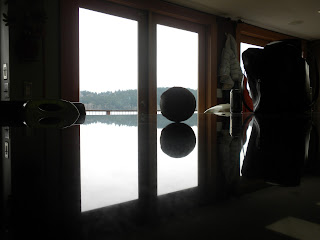-When you take pictures of homes, towns cities, neighborhoods, you take indirect portraits of the people who live there
-can be formal or informal
-three types of architecture shots, interior,big picture, and detail
Looking Back
-Film was very slow and took a long time to expose, but buildings stayed still so the picture would come out fine
-Charles Negre a painter in the 1840s took pictures for his paintings to sketch from but was so fascinated by the photography itself he turned all of his attention to photography
-Frederick H. Evans photographed English and French cathedrals with emotion and light
-Eugene Atget former actor and sailor shot over 10,000 photos with "old fashioned" cameras
Thinking Artistically
-Use of line can be used to lead the viewer straight through the architecture or divide the picture in segments
-Surroundings are a key aspect to sharpen or soften the image
-Pattern- the repitition of any elements of art enrich and strengthen the photo
Camera Settings
-smaller f-stop gives a greater depth of field bringing more scene into focus (f/11 to f/22)
Value and Texture
-All visual art relies on Value (how light and dark the colors are)
-Contrast- the range of values from light to darkof the colors or shades of gray in an image
-Greatest contrast is usually powerful and dramtic
-mostly darker values called a low-key print, mostly lighter values, high-key print, can be in middle too
-value can make a subject stand out
-Texture- tactile or visual quality of a surface in an image that can be empasized by dramtic lighting
-texture enhances the 3-d look to an image
Film
-color films emphasize color and setting
-black and white photos emphasize values shapes and textures
-can be commercial and artitsic architectural photos
-comercial is normally in color, artistic is in black and white
Lighting
-lighting and the coor of the lighting is very important for interior shots
-different kinds of light are used for interior shots (incandescent, household bulbs, quartz lights, modern spot;ights, and flourescent lights)
-each have a different type of light
Lenses
-wide angle lenses are good for wide interior shots and big picture shot because you dont have to stand very far back
Camera Support
-to get very details photos you want to use a slow shutter speed and tripod or monopod
Filters
-a yellow or orange filter will separate the clouds from the sky in black and white photos, will also bring out fine textures
-polarizer can darken skys and eliminate relfection in nonmetallic objects
The Big View
-big view- wide angle, overall picture, whole building
-perspective distortion- the illsion of paralel lines converging
-shooting from the side creates a 3-d look and lighting accentuates textures
The Detail Shot
-pg 192
















